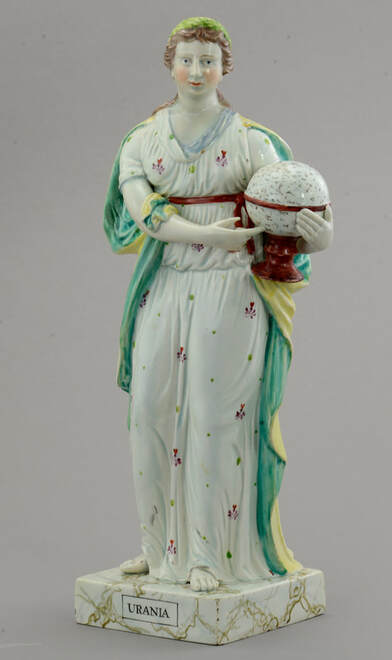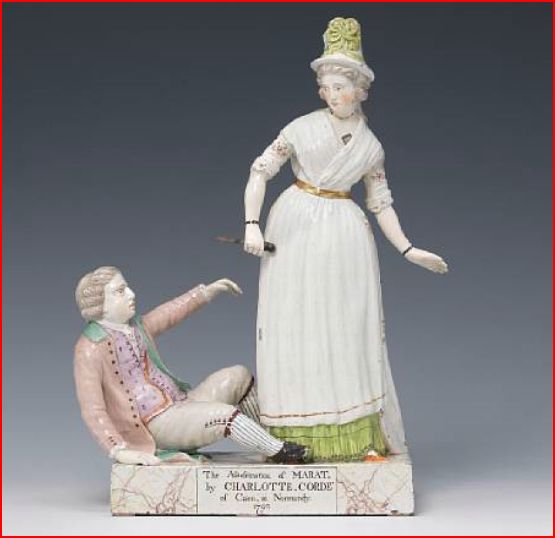This figure was made by the short-lived Lakin & Poole pot bank, that operated from 1791 to 1795. Lakin & Poole figures are readily recognizable. They are exceptionally well modeled and share common facial features--puffy cheeks (an undiagnosed case of mumps?) and protruding eyes (thyroid disease?) among them.
My next find is vastly different. Fast-forward thirty or so years to around 1820, when this petite treasure was potted. The lady stands alongside her bee hive. The figure is just 4 inches tall and is unrecorded--indeed, I have yet to see bee-keeping portrayed in figural form. The object in her hand is probably a smoker, not a watering can. Smoke calms bees, so a smoker was a must-have item when invading their territory.
On the subject of bees, before the Victorian times, bees were housed in upturned straw baskets called skeps, such as you see here. The shape was conducive to the formation of the honey comb. The downside was that turning the skep over to collect the honey killed the bees or made them homeless, and so the beekeeper had to hunt down a new wild swarm and start from scratch.
It would have driven me crazy to not see what was going on in the skep. How did you know when the combs were full? Over time, gardeners resolved that problem by adding a peep hole. And they also worked out how to tap the honey without upending the skep and destroying the hive.
So where did I find these figures? Urania came up at auction in the Staffordshire Potteries, and I like to think she has been there since her "birth" in around 1793. I was familiar with the figure form, having seen a Lakin & Poole Urania a long while ago. Until now, I had known of no others. The condition report seemed thorough, and I detected nothing untoward on the high-resolution images. So I dragged myself out of bed in the middle of the night to bid on the auction--that and the whole process of payment and arranging shipping can be a huge hassle. When the figure arrived I was thrilled. More usually, auction purchases come with an unanticipated problem.
The beekeeper also came up at auction, but this time, I was not confident that the condition report was complete. The longer I looked at the images, the less certain I was that the head had not been restored. A friend scrutinized the images too, and we both had doubts. Had I been confident, I would have bid generously--but I could not face the prospect of buying a figure and finding it had a restored head. What would I be able to do with it in those circumstances? The trade has ways of moving mistakes on, but I would have been stuck with my mistake----so I did not bid.
As luck would have it, the figure landed up in the hands of a dealer whom I trust implicitly. The head was perfect, and I was over the moon at being able to add this little figure to our shelves, and at a price that was lower than I had been prepared to bid. I share this with you so you understand the perils of bidding at auction, and to remind you that the peace of mind that comes with buying from a trusted source adds immeasurably to the pleasure of collecting.



















